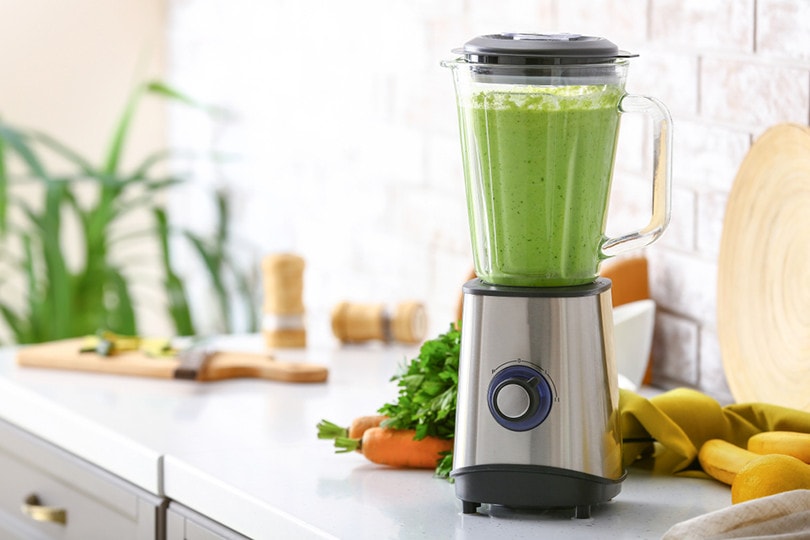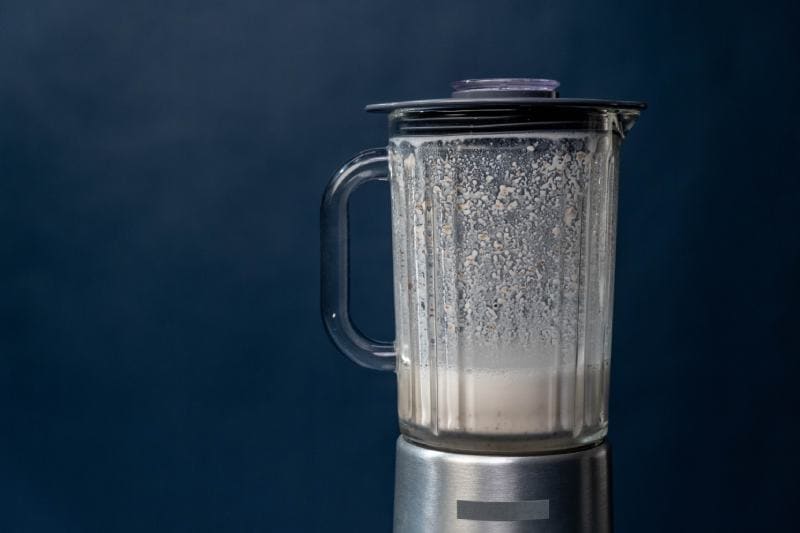Who Invented the Kitchen Blender & When?
-
Melissa Gunter
- Last updated:

When we’re in our kitchens, whipping up tasty meals, smoothies, and drinks for our families, it’s easy to forget the convenience surrounding us. The kitchen is home to dozens, if not more, of gadgets that we use daily or at least with some degree of frequency. Take the kitchen blender. How many times have you whipped out your blender to toss together a smoothie to take out the door on your way to work? What about a fun night of milkshakes with the kids or chopping veggies for the week’s dinner prep?
While we may not think about the importance of our kitchen gadgets often, that doesn’t mean we don’t understand how hard our lives would be without them. This is especially true when it comes to the kitchen blender. If Stephen Poplawski hadn’t decided to throw a blade on a container in 1922, imagine how long it would’ve taken to bring this kitchen convenience to our countertops. Let’s take a brief look at the history of the kitchen blender and how things have advanced over the years leaving you with the marvel kitchen tool that is most likely one of your prized possessions.
Why Was the Kitchen Blender Invented?
Before you can truly dive into the history of the kitchen blender, its creator, and where it went from there, it’s important to understand why this tool was needed. It was the 1920s. Life was a bit different. Instead of stopping by your favorite coffee shop or tea place, you visited malt shops and soda fountains. Here, people would sit at the counter, chat with their neighbors, and wait while the owner made them a drink.
Also at this time, powdered malt was coming into play. Powdered malt is a mixture of malted barley, wheat flour, and evaporated milk. It offered shopgoers a more flavorful dairy beverage. Add in the fact that ice cream was at the height of its newfound popularity and it was easy to see why a cold malt could be a winner if done correctly. The issue arose when malt got cold. Instead of being smooth and creamy, it would clump. The paste it made wasn’t appetizing and left those wanting to make a great soda fountain beverage with major issues.

Stephen Poplawski Steps Up
In 1922, a Polish-American by the name of Stephen Poplawski decided it was time to step up and make the changes needed to help the soda fountain industry. Poplawski was born in 1885. Poland was his original birthplace but he and his parents immigrated to Racine, Wisconsin when he was only 9 years old. Poplawski was 33 when he founded Stephens Tool Co.
A mere year later, in 1919, he was hired by the Arnold Electric Co. to develop and build a tool to help with the making of malts. In 1922, Poplawski was successful. How did he do it? He wired several spinning blades to a motor. Then this contraption was added to a specially made clear, glass container. When he saw the potential of what he’d created, he applied for a US Patent Number and was granted US 1480914 for his achievement.
Answering the Demand
In 1926, Arnold Electric Co. was sold to Hamilton Beach Manufacturing Co. of Racine. Of course, Stephen Poplawski joined their staff. This is where Fred Osius came into the picture. Osius and the team at Hamilton Beach not only launched an advertising campaign to get Poplawski’s blender into soda shops, but they also decided to see if any changes could take place to make the machine practical for home use as well. In 1933, the Hamilton Beach team bought the rights to produce Poplawski’s invention.
Osius knew the blender should be in homes across the county. To ensure this happened, he began making adjustments. The rotating blades were remodeled to be safer for use domestically. Even the top of the glass container changed. Osius added a form-fitting cover to keep liquids inside. Then it was time to truly promote this new gadget.
That’s when Osius contacted Fred Waring, a big band star of the day, to help him promote the blender. Waring agreed but also stepped in to help Fred Osius add more changes and thus the Waring Blender was born. By the time the two men were finished, the blender could help chop fresh veggies, make malts, and even craft the newly beloved milkshake.
Blenders in Other Industries
By the 1950s, the blender was a staple in many homes. Of course, they were also used in restaurants, malt shops, soda fountains, and even ice cream shops. But what more could they be used for? The answer to this question came when medical personnel and scientists decided to bring the blender’s ability to emulsify and puree substances into the lab.
One of the best-known results of the blender being used for breakthrough medical research at the time was when Dr. Jonas Salk used one while working on the polio vaccine. In 1955, he successfully used a blender to puree dead polio viruses. The resulting serum was injectable and successful in fighting the disease.

Blenders in the Modern World
Like with most inventions, the blender has changed since its original creation back in 1922. The immersion blender came into existence in 1950 as a way to blend without the container. This allowed chefs to blend soups and sauces inside the pot instead of transferring them to a different container. The advancements didn’t stop there, however.
Nowadays, the blenders found in local department stores are high-speed pieces of technological equipment. They feature multiple settings to help ensure whatever you’re making in your kitchen comes out perfectly in as little time as possible. The food industry has even advanced thanks to newer styles of blenders. Larger blenders are available, and even faster immersion blenders can be used. All in all, the convenience of the original blender and the advancement of modern technology have shown to make life better.
In Conclusion
While the history of the blender may deal with selling rights and company changes, it’s clear that anyone who has one of these kitchen gadgets at home should be thanking Stephen Poplawski for his contribution. Thanks to him, we can now enjoy smoothies, coffees, frozen treats, and even great meals in the privacy of our own homes and out in the world.
See Also:
- Who Invented the Clothes Dryer, and When? History of the Dryer
- Who Invented the Crock Pot (Slow Cooker)
Featured Image Credit: Pixel-Shot, Shutterstock
Contents
